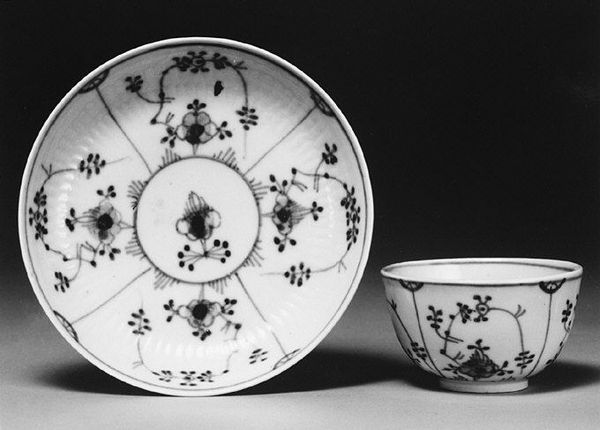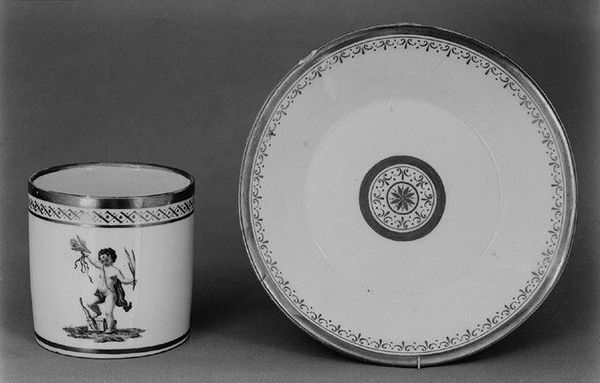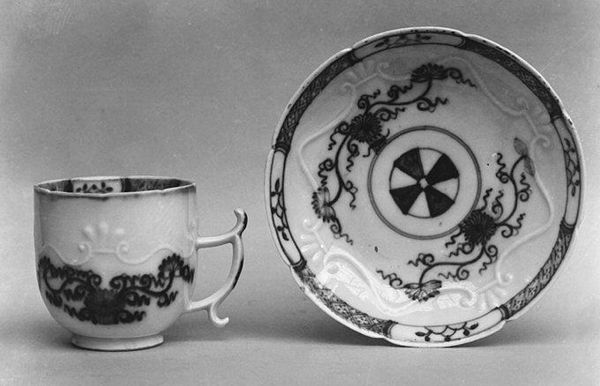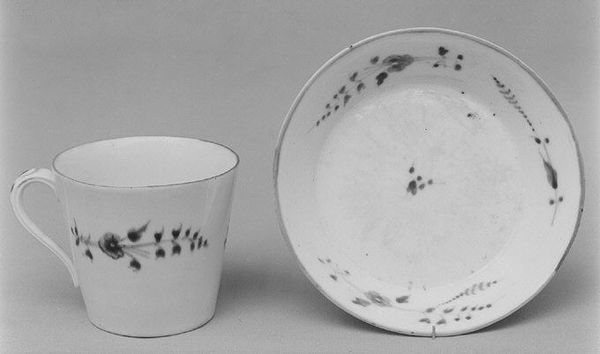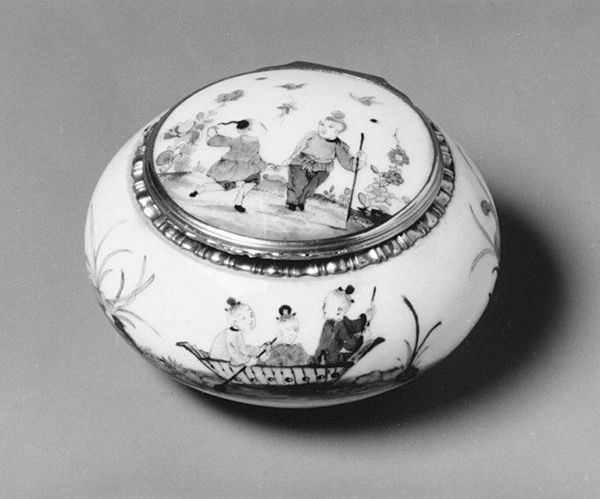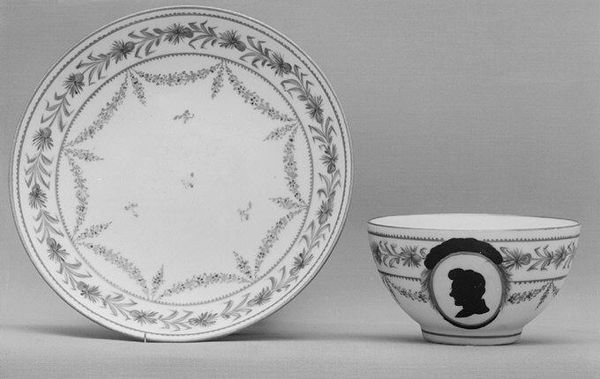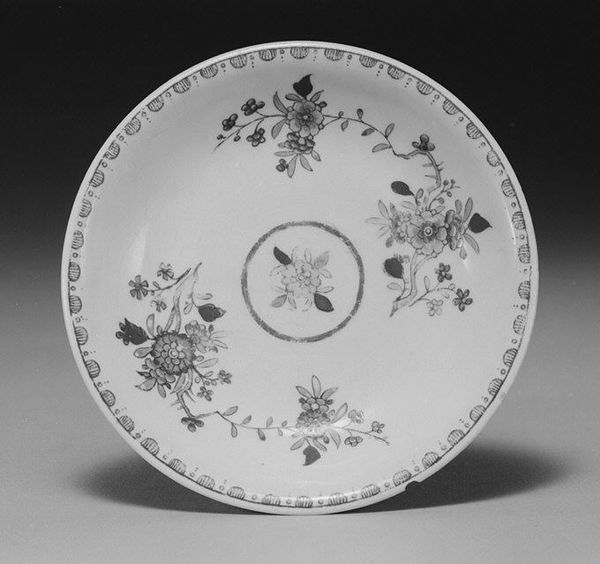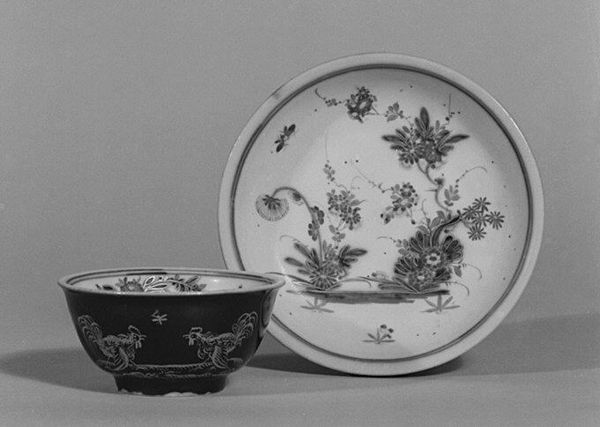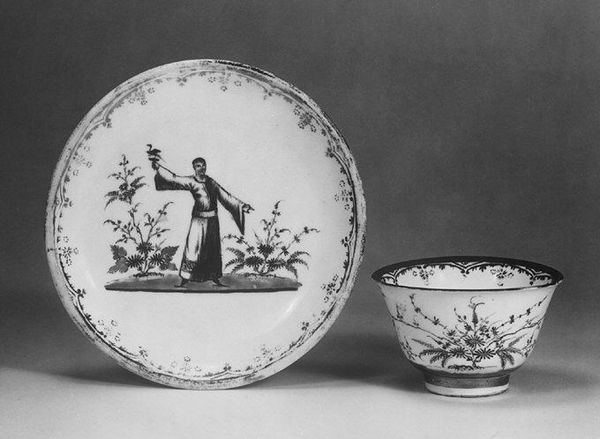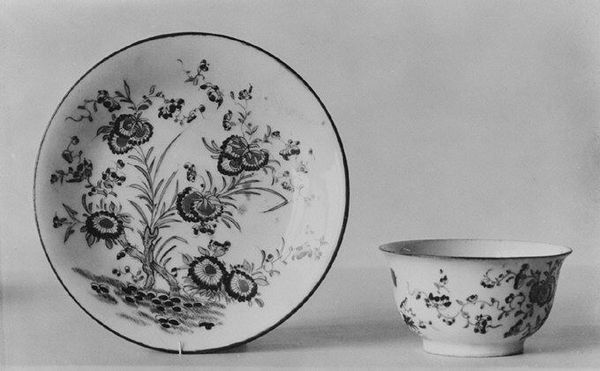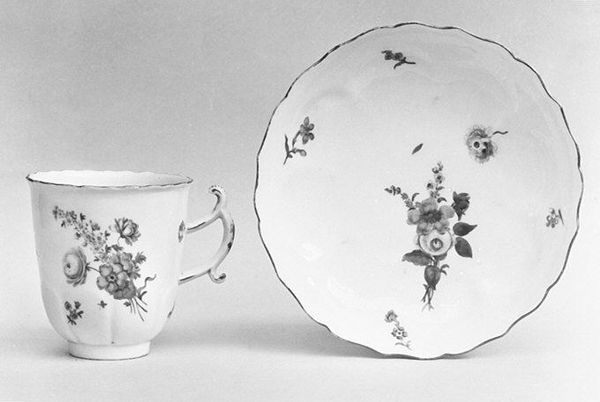
Dimensions: Height (teabowl .255): 2 in. (5.1 cm); Diameter (saucer .256): 5 5/16 in. (13.5 cm)
Copyright: Public Domain
This teabowl and saucer was produced by the Frankenthal Porcelain Manufactory. It is now located at the Metropolitan Museum of Art. During the 18th century, tea was more than a beverage, it was a ritual deeply embedded in social life and class distinctions. Porcelain teaware like this was a coveted symbol of wealth and sophistication, reflecting a society that embraced luxury and refinement. These objects were not merely functional; they were carefully crafted to enhance the tea-drinking experience, embodying elegance and status. But let's consider the wider context. These items were often made and enjoyed in societies deeply entangled with colonial exploitation. Tea, sugar, and porcelain itself were all products of global trade networks that often relied on forced labor and unequal exchange. This teabowl and saucer, delicate and beautiful as it is, invites us to reflect on the complex relationships between luxury, labor, and power that shaped the world we live in.
Comments
No comments
Be the first to comment and join the conversation on the ultimate creative platform.
